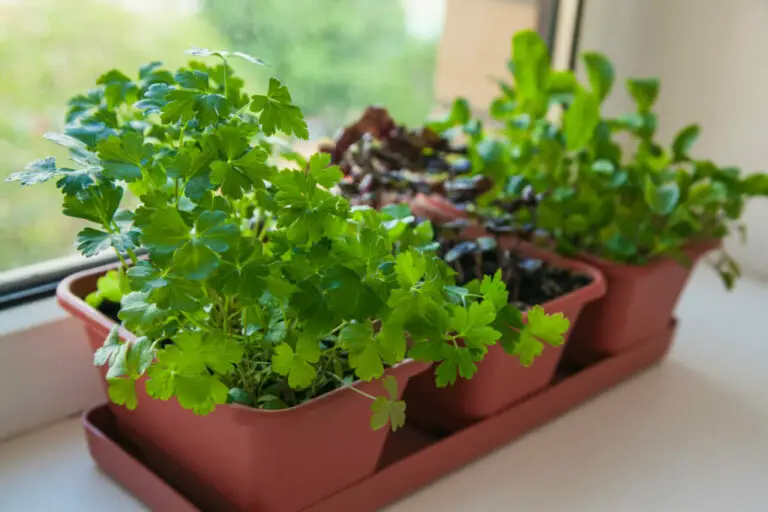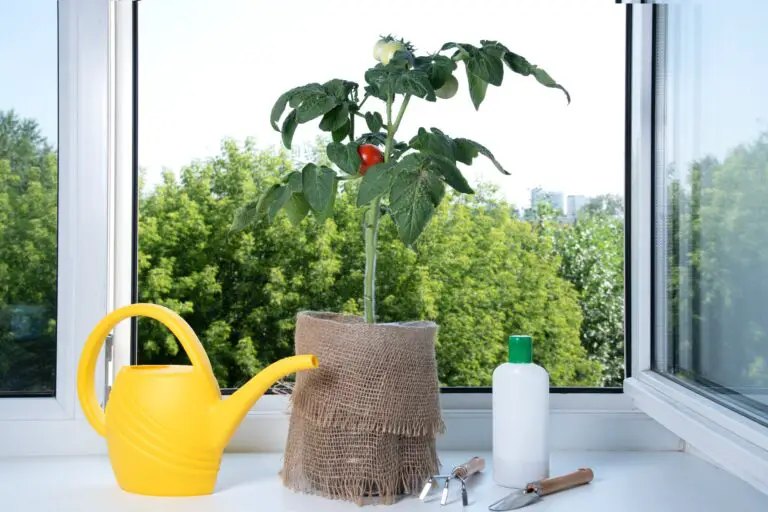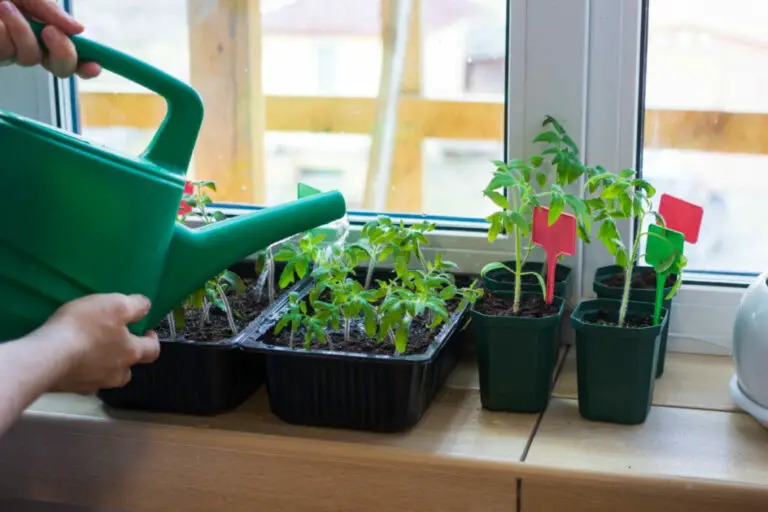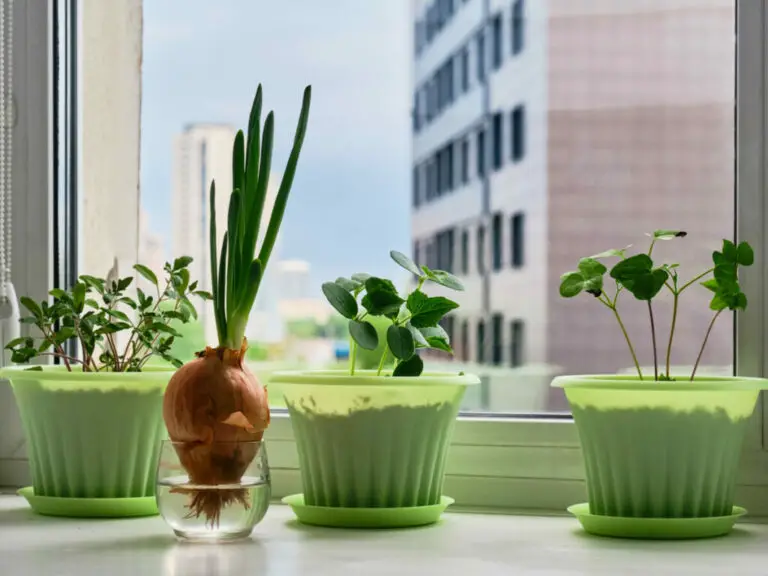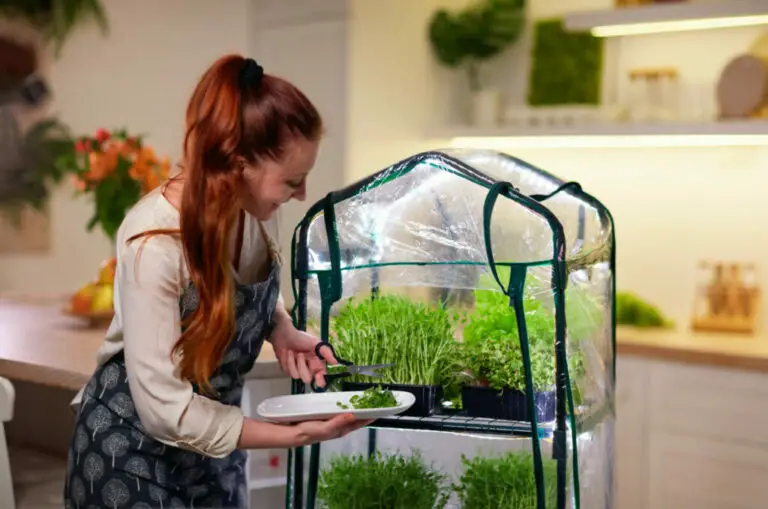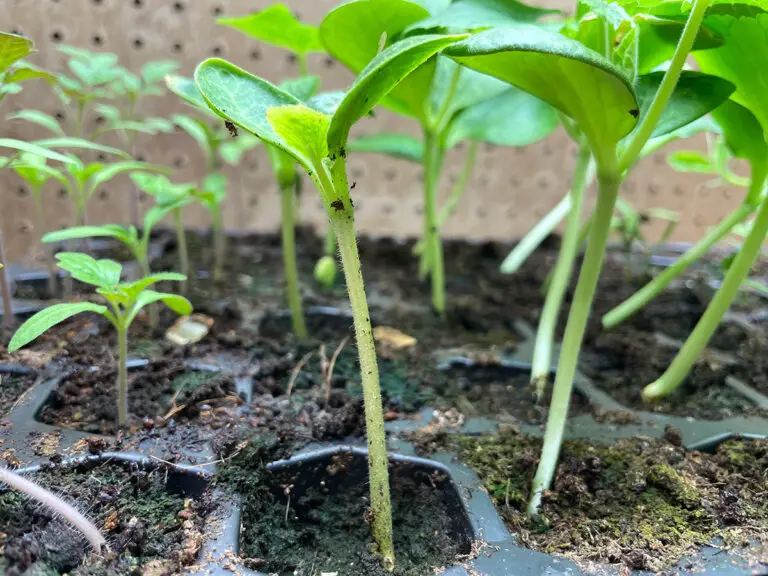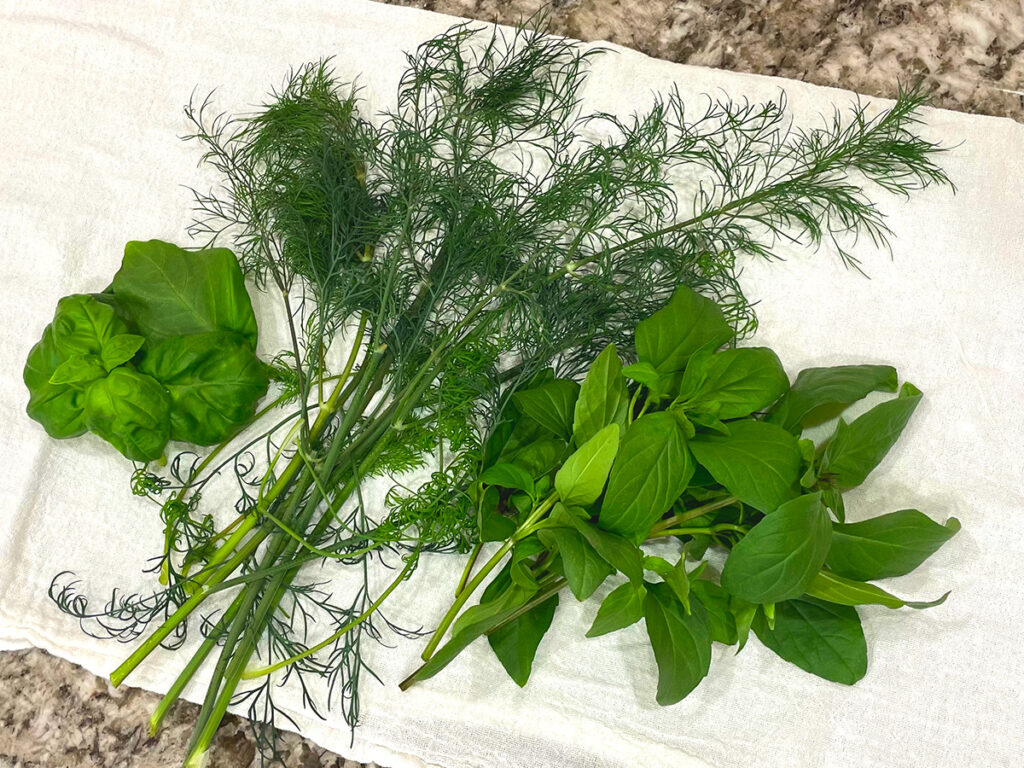
Did you know you can start a little herb garden inside your home? With the right amount of sunshine and a good amount of care and attention to your plants, you can raise some of your favorite cooking herbs right in your kitchen. But of course, not all herbs can be grown successfully indoors, so what are some of the best herbs you can grow?
The best cooking herbs that can be grown indoors include plants like oregano, rosemary, basil, thyme, chives, and mint. These are just a few of many herbs that thrive indoors in natural light or under full-spectrum grow lights. Herbs should be grown in moist, loose soil and fertilized bi-monthly.
Some of these herbs, however, must be grown under varying conditions. So let’s learn all about each of these herbs and how you can grow them in your kitchen so you can add some spice and zest to your favorite dishes. And, scroll to the bottom of this article to find out what other herbs you can grow inside your home if these aren’t the herbs you were looking for!
Oregano
Oregano is a popular and flavorful herb, and it is typically used in Italian dishes, especially in tomato-based sauces like pasta sauce and pizza sauce, as well as in Italian salad dressing. It’s also often used to provide an earthy flavor to meats cooked in olive oil-based marinades, such as chicken, lamb, and beef. It also makes for a delicious garnish for vegetables such as cauliflower, zucchini, and eggplant.
The reasons that Oregano is a great herb to grow indoors are not only that it can be grown any time of the year, but that you won’t have to deal much with pests or fungal root diseases infesting or infecting the plant or the soil it grows in. While these are still possible, they are much less common in Oregano than with other herbs.
Like the rest of the herbs in this list, you can either buy potted oregano that has already grown from your local market or plant nursery and follow the care instructions provided with the plant. Oregano can be grown in your backyard first using a seed pack, then dug up and placed in a pot of soil. Make sure to spray at the leaves to remove any insects and then flush the roots with water before replanting the herb. Oregano is best grown in loose and lightweight soil that drains water quickly, typically mixed with sand or finely ground granite. The soil should be watered only frequently enough that it remains moist, not saturated.
Keep in mind that Oregano should be grown under bright lights, whether that be next to a large window that receives the most sunlight during the day, or under a full-spectrum fluorescent grow light. You’ll want to keep this light on the brightest setting during the day and to reduce electricity and light in the room.
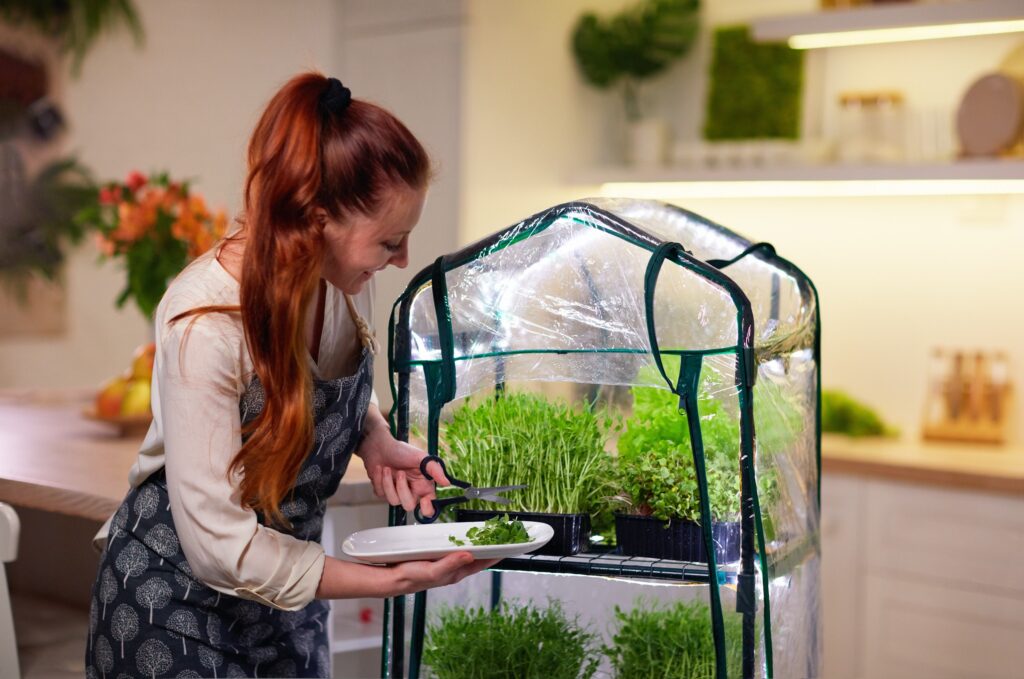
Rosemary
Rosemary is another popular herb used to spice up Mediterranean dishes, and it is popularly used for fragrance purposes such as in soaps, perfumes, and cosmetics. It adds a minty and savory taste to many different meats and fish, and flavors some household dinner favorites such as roasted vegetables, bread rolls, stuffing, stew, and casseroles. In fact, many restaurants and cooks like to add rosemary to their french fries, including the famous Utah burger joint Cubby’s.
Because Rosemary is so versatile, it makes for a tasty seasoning staple in your kitchen, and who wouldn’t want the convenience of growing it right inside your home? Rosemary can be grown indoors all year round and it’s easy to dry and ground into a fine seasoning.
The downside to growing Rosemary indoors is that it’s not easy to germinate, and so you’ll probably need to buy the plant already grown and potted. You can purchase a small, young Rosemary plant that is still in the growing stages. This way, you’ll be able to simply re-pot the herb into a larger pot and with proper care, watch the herb multiply itself. You’ll want to re-pot the herb into a porous clay pot, with loose soil that has a small amount of fertilizer.
The soil you use should be airy enough that it can retain water and allow the roots of the Rosemary to breathe. You’ll need to water your rosemary whenever the soil feels dry in the summer, and in the winter the plant should remain moist. Don’t let the soil get soggy, though, because this can cause the roots to rot and attract harmful insects.
Basil
Part of the Mint family, Basil is another popular herb that is a staple to many homes and is most commonly used to flavor various Italian and Mediterranean cuisines, and is also used in Vietnamese, Thai, and Indonesian dishes. More particularly, it is used in the typical American home for dishes like pasta, pizza, salad, and anything with a pesto dressing. It also provides a refreshing tang to many beverages including alcohol, juice, and lemonade. Basil is also rich in vitamins, minerals, and antioxidants, providing a tasty and nutritious addition to your kitchen pantry or fridge, depending on whether it is dried or consumed fresh.
Because you can add basil to just about anything, and because it is easy to grow, care for, and harvest, it’s no wonder so many people like to grow this herb right in their kitchen. You can start growing basil with a pack of seeds, which makes it one of the most convenient and cheapest herbs to grow in your home. One packet of seeds is enough to keep your family supplied with basil, and, bonus points for the fact that you won’t need to add any fertilizer to the soil for 6 or more weeks!
Considering it starts by planting a seed, the only downside to growing basil in your home is that it will take a couple of months for it to grow enough to be harvested. It will need to be grown in a fresh potting mix lightly moistened. The seeds should be added and spread out over the top layer of soil, and then a small layer of soil should be added over the seeds. Next, you’ll need to press gently into the soil, and water it lightly.
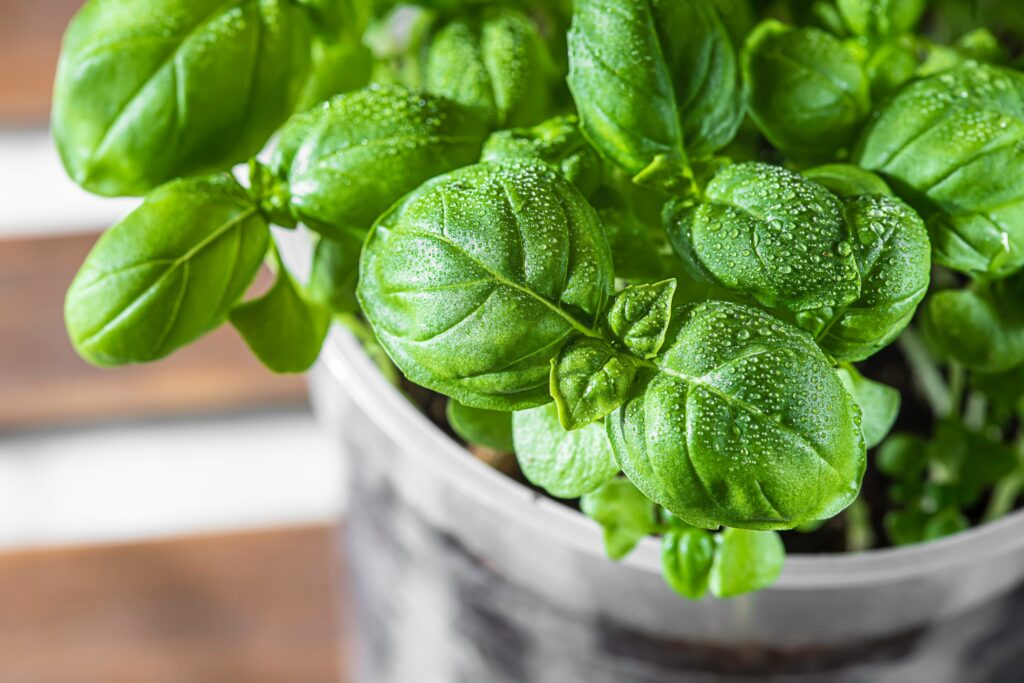
You’ll want to place the pot in front of a window that is facing the south, or where it will receive the most sunshine. Make sure the window is sealed well (so that no cold drafts come through in the winter), and rotate the pot so the herbs get an equal distribution of sunlight. Under a grow light, the lamp should be set to be on for 14 hours per day, a few inches above the soil, and later raised up a few inches above the leaves as they grow.
The soil should always be kept moist, and never soggy. As the leaves grow, you can begin harvesting the larger leaves if they’re overcrowding each other and add them directly to some of your favorite dishes, or leave them out to dry after they’ve been cut. It should, however, take a couple of months for all the leaves to be fully grown and ready to eat. Once the vibrantly green leaves begin to turn pale, it’s time to add fertilizer. We recommend using a liquid fertilizer.
Thyme
Thyme is a delicious herb that is most commonly used to season various types of soups, braises, and sauces. It also pairs well with a variety of vegetables, beef, fish, pork, and even goat cheese. There aren’t many things that thyme won’t add some zesty flavor to, but don’t go adding it to fruit or sweet treats!
Like basil, thyme is another herb that can be successfully grown indoors right from the seed. In fact, it’s one of the best herbs to grow inside because it’s easy to grow, and you don’t need any special soil, watering habits, or temperatures to keep it thriving. You also don’t need to use any sort o fertilizer! Thyme actually likes growing in soil that doesn’t have any nutrients, and fertilized soil can actually be too rich for the herb to thrive well. It can also be grown in a small pot, about four inches in diameter, and this is plenty of room for the roots.
The only thing you’ll need to focus on is providing enough consistent bright light, but this can easily be accomplished by placing the plant in front of a large window that receives a lot of sunlight (at least 8 straight hours) during the day or placing it under a full-spectrum grow light, much like you can for the aforementioned herbs. Thyme loves to sunbathe, but it isn’t too picky about any other sort of care.
When it comes to temperature and humidity, thyme will thrive in average temperatures of 60 to 80 degrees Fahrenheit, which shouldn’t be too much of an adjustment to the average home. It doesn’t do so well in humid areas of the home, so try to keep this plant away from more humid spaces like the bathroom or the kitchen. Instead, it will thrive well in the living room.
You’ll only need to water thyme whenever the soil is absolutely dry, as this plant tends to prefer under-watered conditions rather than over-watered soil conditions. That said, just water the soil so that it is moist, and don’t worry about re-watering it while it remains moist. Instead, check the soil once a day or every couple of days to see if it has gotten completely dry, then lightly water once more.
Chives
While they’re not typically used in dishes, chives make a great garnish and topping for many main dishes and salads. They are very similar to green onions in looks (though they are smaller) and taste, and thus make for a great substitute for green onions. They also make for great substitutes for any type of onion, though they’re milder in taste than the typical yellow or red onion. Many amateur and professional chefs love to top their omelets, baked potatoes, chicken, casseroles, and pasta with chives.
Because chives can be added to virtually any dish, especially considering the taste isn’t quite as strong as some other herbs, you’ll love having chives so easily accessible by growing them in your kitchen. They don’t need to be watered too frequently and only need a low dose of water-soluble fertilizer twice a month.
The best place inside your home to grow chives is in front of a sunny window facing south. Typically, this is where your plants can receive six to eight hours of full sunlight in the summertime. You’ll need to rotate the pot frequently to ensure that all the chives receive enough sunlight. You can also grow your chives under a fluorescent full-spectrum grow light, much like you can for all other herbs in this list.
Chives should be grown in a clay pot that is at least 6 inches in diameter, but it doesn’t need to be too big to thrive. The pot should be able to drain water, and it should be filled with well-draining potting soil that is both lightweight and airy. Water the pot regularly, but only whenever the top layer of the soil becomes dry to the touch.
You should also provide your chives with an adequate amount of humidity and air circulation. You can do this by misting the plant frequently with a water mister, setting the pot next to a humidifier, or placing the pot on top of a tray with pebbles and water. You can help circulate the air by running a fan in the room or placing a small desk fan next to the pot.
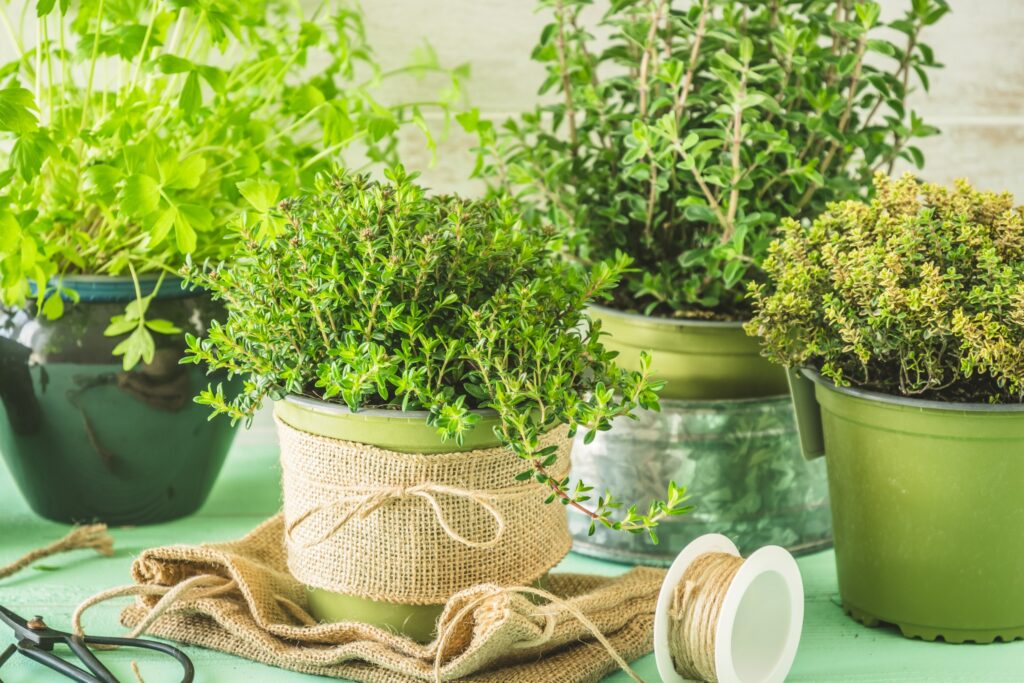
Mint
Mint is probably one of the most popular flavors in the herb world as it provides a fresh taste to your mouth, especially given that it’s often used to flavor breath mints and toothpaste! It’s a popular garnish to many drinks and adds a kick of flavor to various foods, such as herbal tea, iced tea, lemonades, vegetable salads, sauces, pesto dressings, marinades, and pasta salads. It’s also packed with vitamins and minerals that will leave you feeling refreshed and healthy.
Contrary to popular belief, mint is edible both raw and cooked. Although it has a very strong taste, it’s not harmful to eat by itself, although, you may prefer to add it to some of your favorite foods and drinks.
Because fresh mint can be pretty expensive at stores, many people opt to grow it in their kitchen and save a bit of money, especially if they plan to use mint frequently while cooking. Much like the rest of the herbs in this list, mint can also be grown and harvested all year round, but unlike other herbs, mint is the easiest herb to grow indoors! You’ll also be pleased to know that you won’t have to deal with pests and diseases, as mint has such a strong smell and taste that it actually repels most pests and fungi!
The only difficult part of growing mint is that you’ll usually want to source it from another mint plant. This means re-potting part of the plant (with leaves still attached) that is growing outside and bringing it inside or planting about 3 inches of the mint stem into a pot of soil.
You can grow mint from seeds, but it is slow to germinate and grow in the beginning whereas it grows prolifically once it’s established.
When choosing a place for your mint to grow, you’ll want to place it where it can get a lot of sunlight, as mint requires a lot of bright light to thrive. We recommend placing it in front of a sunny, north-facing window, where it will receive sunlight while the sun is at its highest point in the atmosphere. This is typically when the sun is the brightest. Otherwise, you can place the pot under a fluorescent grow light at its brightest temperature.
Mint thrives best on a moderate amount of water, this means not too much water, nor too little, but an occasional dry or wet spell won’t bother the mint too much. To water it, you’ll want to quickly run the pot under cold running water three or four times, allowing the excess water to drain into the sink. Only do this whenever the top layer of soil is dry to the touch.
To fertilize the mint herb, you’ll want to use an organic liquid fertilizer and add it to the soil. You’ll only need to do this once every three weeks in the months of May through August, and once every six weeks throughout the remaining months of the year.
Other Herbs
Some other herbs that you can easily grow in your home and use for cooking include
- sage
- bay laurel
- cilantro
- chervil
- parsley
- lemon balm
- marjoram
- curry
- lemongrass
- tarragon
- Vietnamese coriander
The reason that these didn’t make our list of the best herbs you can grow indoors is that many of these herbs grow under very particular conditions, and many of them must first be grown outside or by a nursery and then repotted once brought inside the home.
So, while they can very well be grown or cared for indoors, they may be more difficult to grow or care for in the home than the herbs that made this list. If you’re wanting to grow any of these additional herbs in your home, we recommend checking out the special pot growing conditions of each of these so you can ensure that these tasty herbs and spices will thrive indoors! If you want to grow a multitude of herbs all at once, then invest in a few pots and a large fluorescent grow light and get to planting!

